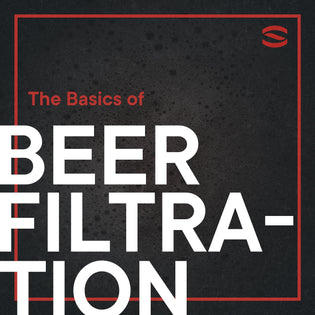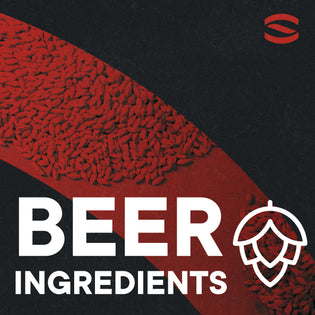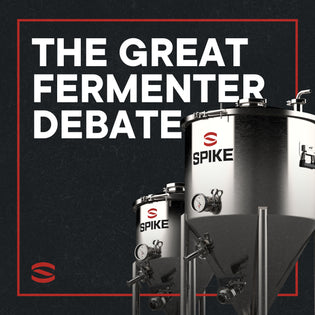
What is Beer Filtration?
In a nutshell, beer filtration is the process of removing suspended particles, haze-inducing compounds, and unwelcome microorganisms from your brew. This results in a clear, visually appealing, and longer-lasting product. Filtration can take place at various stages during the brewing process, depending on the desired outcome and the type of beer being produced. Ultimately, beer filtration is all about ensuring your brew reaches its full potential in terms of taste and appearance.
Why Is It Important to Filter Beer?
Beer filtration serves several important purposes:
- Aesthetics: A crystal-clear beer is visually enticing and often perceived as high-quality. Unfiltered beer, which may appear hazy or cloudy, can deter some drinkers. For example, a clear Pilsner or Pale Ale is more appealing to consumers than one with visible particulates, making it more likely for them to choose your beer in a lineup.
- Flavor and aroma: Proper filtration can eliminate off-flavors or undesirable aromas caused by certain compounds or microorganisms. For instance, filtering out excess yeast cells can prevent the development of yeasty or bready flavors in your beer. Similarly, removing proteins and polyphenols responsible for astringency can result in a smoother, more balanced flavor profile.
- Shelf life: By removing particles and microorganisms that might cause spoilage, filtration helps extend the shelf life of your beer. For example, a beer that has been effectively filtered is less likely to develop off-flavors or spoilage during storage, ensuring that your product stays fresh and enjoyable for a longer period.
- Consistency: Filtration guarantees that your beer maintains a consistent taste and appearance from batch to batch – a key factor in building a solid brand identity and loyal customer base. For example, ensuring that your flagship IPA has the same level of clarity and flavor profile in every batch creates a sense of reliability and trust among your customers, who can confidently purchase your beer knowing what to expect.
- Stability: Filtration can contribute to the overall stability of your beer, preventing undesirable changes in flavor, aroma, or appearance over time. By removing potential sources of haze or sediment formation, filtration can help maintain the clarity and visual appeal of your beer. Additionally, removing certain compounds or microorganisms can prevent the development of off-flavors or spoilage during storage, ensuring that your beer remains consistent and enjoyable throughout its shelf life.
What Is Used For Filtration Of Beer?
There are several methods for filtering beer, each offering its own set of advantages and disadvantages. Let's dive into three common filtration techniques:
Surface Filtration
Also known as depth filtration, surface filtration uses filter sheets or cartridges made from materials like cellulose, perlite, or diatomaceous earth. These filters have minuscule pores that trap and retain particles, allowing clear beer to pass through. Surface filtration is perfect for removing larger particles and is most effective when the beer has already undergone some degree of clarification, such as settling or centrifugation.
Pros:
- Cost-effective and user-friendly
- Effectively removes larger particles
Cons:
- May require pre-filtration for optimal results
- Filter sheets or cartridges need frequent replacement
Cake Filtration
In cake filtration, a "cake" of filter aid, such as diatomaceous earth or perlite, is built up on the surface of a filter screen. As the beer passes through the cake, particles are trapped within the filter aid, resulting in a clear product. This method excels at polishing beer and removing finer particles but can be labor-intensive and necessitates careful monitoring for optimal results.
Pros:
- Extremely effective at removing fine particles
- Produces a brilliantly clear beer
Cons:
- Labor-intensive and demands close monitoring
- Can be difficult to scale up for larger operations
Cold Filtering
Cold filtering chills the beer to near-freezing temperatures, causing haze-causing proteins and polyphenols to clump together and settle out. The beer is then passed through a filter to remove these larger particles. This method is popular among larger breweries, as it is highly effective and easily scalable. However, cold filtering may remove some flavor compounds from the beer, resulting in a less complex taste profile.
Pros:
- Highly effective at removing haze-causing compounds
- Easily scalable for larger operations
Cons:
- May strip some flavor compounds, resulting in a less complex taste profile
- Requires precise temperature control and specialized equipment
How Does Beer Get Filtered?
The filtration process typically commences after the beer has completed fermentation and undergone some form of clarification, such as settling or centrifugation. The beer is then passed through a filtration system, which may involve one or more of the methods described above. The choice of filtration method depends on factors such as the desired clarity, the type of beer being produced, and the size of the brewing operation.
What Does Filtration Remove From Beer?
Filtration targets various compounds and particles in the beer, including:
- Yeast cells: Yeast is essential for fermentation but can contribute to off-flavors or a hazy appearance if left in the finished product.
- Proteins and polyphenols: These compounds can cause haze and may also contribute to undesirable flavors or mouthfeel.
- Microorganisms: Filtration can help remove bacteria and other microorganisms that could spoil the beer or cause off-flavors.
- Other particles: Filtration can also remove larger particles such as hop debris, grain particles, or other sediment.
Scaling Your Filtration Process
When it comes to beer filtration, the methods and equipment used will vary depending on the size and scale of your brewing operation.
Filtration Process For Breweries
Commercial breweries typically have larger filtration systems that can handle higher volumes of beer. These systems are designed to cater to the unique needs of a large-scale operation, ensuring efficiency and consistency throughout the brewing process. Breweries may use a combination of methods, such as cold filtering followed by surface filtration or crossflow filtration, to achieve the desired clarity and stability in their products.
To optimize the filtration process and maintain a high level of quality control, breweries often invest in automated systems. These systems can monitor and control various aspects of the filtration process, such as flow rate, pressure, and temperature, ensuring consistent results and reducing labor costs. Additionally, breweries may implement in-line sensors to continuously monitor the quality of the filtered beer, allowing for real-time adjustments to the process as needed.
Filtration Process for Homebrewers
Homebrewers have a wide range of options for filtering their beer, catering to varying levels of experience, brewing volumes, and budgets. From simple and affordable setups to more advanced systems that closely mimic commercial brewery processes, there is a solution for every homebrewer's needs.
1. Basic Filtration Options: For those just starting their homebrewing journey or operating on a tight budget, there are a few cost-effective and user-friendly options for filtering beer. These methods can be effective for small-scale operations and require minimal investment. Some examples include:- Funnel with a fine mesh strainer: This is one of the simplest and most affordable methods for filtering beer. A fine mesh strainer placed over a funnel can effectively remove larger particles like hop debris and some yeast cells, resulting in a clearer beer.
- Filter bag: A filter bag, typically made of nylon or polyester, can be used to strain the beer during the transfer process. This method is easy to use and can help remove larger particulates from the beer.
- Plate filter system: This system utilizes filter sheets placed between two plates to filter the beer. While requiring slightly more investment than the previously mentioned options, a plate filter system can offer improved filtration efficiency and is suitable for small-scale homebrewing operations.
- Cartridge filters: These filters come in a range of pore sizes to suit different brewing needs and offer increased filtration efficiency compared to basic options. Cartridge filters are typically housed in a filter housing and can be used with a pump for more effective filtration. This setup allows for greater control over the flow rate and pressure, ensuring optimal results.
- Small-scale commercial filtration systems: Some homebrewers may choose to invest in small-scale versions of commercial filtration systems, such as crossflow or depth filters, to achieve professional-level clarity in their finished product. While these systems can be more expensive and require a larger initial investment, they offer exceptional filtration performance and can be a valuable addition to a serious homebrewer's setup.
- Inline filters: These filters can be added to the transfer tubing during the racking process to catch any remaining particulates, further improving the clarity of the finished beer.
- Oxygenation systems: Proper oxygenation during the transfer process is important for yeast health and can help prevent oxidation. Some homebrewers opt to use inline oxygenation systems to introduce oxygen while filtering their beer, ensuring the yeast has the necessary resources for a healthy fermentation.
Ultimately, the choice of filtration method will depend on the homebrewer's preferences, budget, and desired level of clarity. With a variety of options available, homebrewers can find the perfect filtration solution to suit their specific needs and create exceptional, professional-quality beers right at home.
Conclusion
Beer filtration is a critical step in the brewing process that plays a significant role in the appearance, flavor, and shelf life of your finished product. By understanding the various filtration methods available and their respective pros and cons, you can make informed decisions about the best approach for your brewing operation, whether it's a large-scale commercial brewery or a small homebrew setup.
FAQs
Why Is It Important To Filter Beer?
Filtering beer enhances its visual appeal, flavor, aroma, consistency, and shelf life, ensuring a high-quality and enjoyable product.
What Is Used For Filtration Of Beer?
Common filtration methods include surface filtration, cake filtration, and cold filtering, each employing different techniques and materials to remove particles and haze-causing compounds.
Surface Filtration: Using filter sheets or cartridges, surface filtration traps larger particles and is most effective when the beer has undergone prior clarification.
Cake Filtration: A "cake" of filter aid, like diatomaceous earth, is built on a filter screen to trap particles as beer passes through, polishing and removing finer particles.
Cold Filtering: By chilling beer to near-freezing temperatures, proteins and polyphenols clump together and settle, allowing filtration to remove these larger particles for enhanced clarity.
How Does Beer Get Filtered?
After fermentation and clarification, beer is passed through a filtration system, which may involve one or more methods, depending on factors like desired clarity, beer type, and operation size.
What Does Filtration Remove From Beer?
Filtration targets yeast cells, proteins, polyphenols, microorganisms, and larger particles like hop debris and grain sediment to improve clarity, taste, and shelf life.
Scaling Your Filtration Process: The methods and equipment used for beer filtration vary based on brewing operation size, from large-scale commercial breweries to small homebrew setups.
Filtration Process For Breweries: Commercial breweries use larger filtration systems, often automated, with a combination of methods to ensure efficiency, consistency, and optimal clarity in their products.
Filtration Process For Homebrew: Homebrewers can choose from a range of filtration options, from basic to advanced methods, depending on their experience, brewing volume, and budget.





